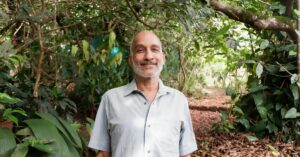Bellandur Lake Fire: 5 Ways India Can Revive Its Polluted Urban Water Bodies
The burning Bellandur lake in Bengaluru is yet another reminder that scientific restoration of lakes needs to be among India's top priorities. Here are 5 innovative ideas that may provide sustainable solutions to urban water pollution.

The Bellandur Lake in Bengaluru is on fire again — for the third time in six months. Known for its carpet of toxic froth and filth that spills on the adjoining road, it has now become a common sight to see this lake on fire.
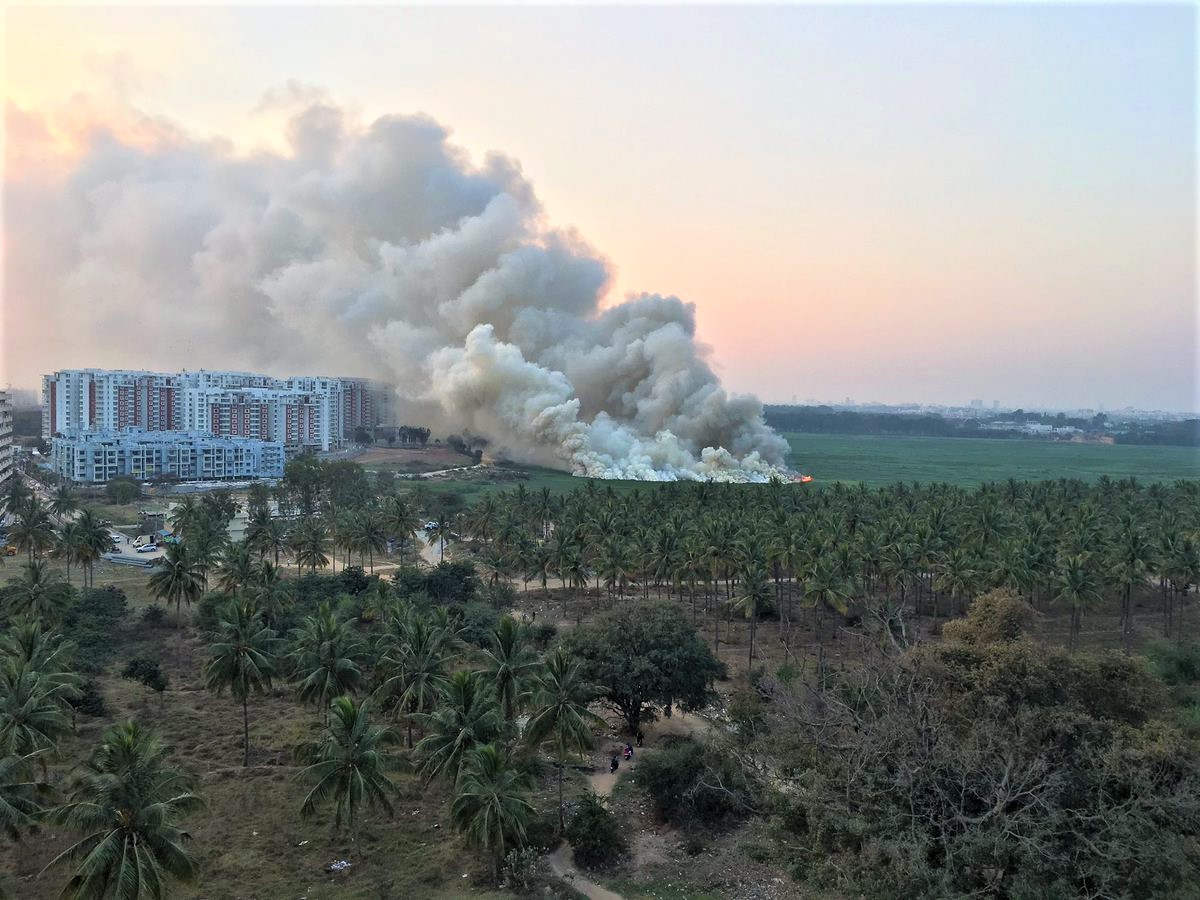
Photo Source
Sadly, this is not the only lake dying a slow death in Bengaluru, a city once famous for its beautiful lakes created by the Kempe Gowdas, the Wodeyars of Mysore and then the British. Water bodies like the Kundalahalli Lake, Varthur Lake, Challakare Lake and Horamavu Agara Kere are also on the decline thanks to unplanned urbanization, encroachment and discharge of sewage/industrial effluents.
A recent survey on 105 lakes in Bengaluru, conducted by a team of researchers headed by Professor Ramachandra T V from the Energy and Wetlands Research Group, Centre for Ecological Sciences, IISc, Bangalore, found that only four seemed to be in a healthy condition while nearly 25 lakes were in a very bad state – fully covered with macrophytes, dumped with solid or liquid wastes and with little or no water.
While increasing pollution levels are threatening fresh water bodies worldwide, the problem is assuming the shape of an environmental crisis in a developing country like India.

Photo Source
This is why scientific restoration of lakes and other freshwater habitats needs to be among India’s top priorities. However, in order to address this serious issue, it is imperative that key stakeholders come together to discuss, mediate and explore the best solutions to mitigate the problem.
Here are 5 innovative ideas and inspiring examples that may provide sustainable solutions to urban water pollution.
1. Novel and Eco-friendly Nanotechnology

Photo Source
Bengaluru’s lakes have been host to untreated wastewater and sewage for many years now. These foul waters have also been the laboratories of T. Sampath Kumar, a chartered accountant by training, who is also the inventor, producer and sole supplier of a proprietary nutrient he calls NuAlgi—Nu for new and algi for, well, algae.
The founder of Bengaluru-based NuAlgi Nanobiotech, Sampath’s technique works by kick-starting the foundation of the aquatic food chain. He feeds a mixture of nutrients to diatoms—the most basic, single-cell life form found in ponds, lakes, rivers and oceans. As the algae formed by diatoms grow, they release oxygen into water.
The oxygen released helps aerobic bacteria efficiently break down the organic matter and convert the pollutants to base constituents, all this minus the stink that anaerobic decomposition generates. The diatoms are eaten by zooplanktons that are, in turn, consumed by fish.
One litre of NuAlgi, Sampath says, can purge 4 million litres of water of its contaminants. Fishermen in and around Bengaluru are using his concoction of nutrients to clean their hunting grounds so that fish livestock is replenished. The relatively little-known firm has so far treated at least 100 lakes. In Bangalore, it has treated sewage-laden lakes such as the Madivala lake, Ulsoor lake, Vengayyana kere and Puttenahalli lake.
2. Bioremediation

Photo Source
By 2003, Delhi’s Hauz Khas lake had come down from 10 sq km in 1936 to less than 2 sq km (more than an 80 % reduction) due to rapid and haphazard urbanisation. In 2007, Indian National Trust for Art and Cultural Heritage (INTACH) and Delhi Development Authority (DDA) decided to undertake a project to revive the ancient water body.
A scheme was envisioned and conservation work carried out to restore the lake to its former glory. Water from a nearby Sewage Treatment Plant (STP) was diverted after bio-remediation, passing through various check dams in Sanjay Van (a nearby rain catchment area). Today, the lake is home to various migratory birds, a sight for sore eyes in water-deficient Delhi and testimony to the fact that communities can be a part of the change they wish to see.
A combination of weed harvesting, bio-ozolyte treatment and bio-remediation was also adopted by the Tamil Nadu government to save the Ooty Lake. Water hyacinth (an invasive weed) was harvested every three months and used to generate biogas. While bio-remediation was used for in-situ treatment of polluted lake water, bio-ozolyte was used to treat waste water before being let into the water bodies. Eco Bio Blocks (EBB) – blocks made of volcanic rock zeolite and cement infused with special natural micro organisms – were also used.
For the uninitiated, in bio-remediation, a remedial blend of microbes work in an orchestrated manner to facilitate the complete degradation of organic pollutants present in the water into simple non-toxic molecules. This process increases the dissolved oxygen (DO) in water bodies, by bringing down the biochemical oxygen demand (BOD) and chemical oxygen demand (COD). DO improves quality of water and replenishes life in water bodies.
3. Floating Treatment Wetlands
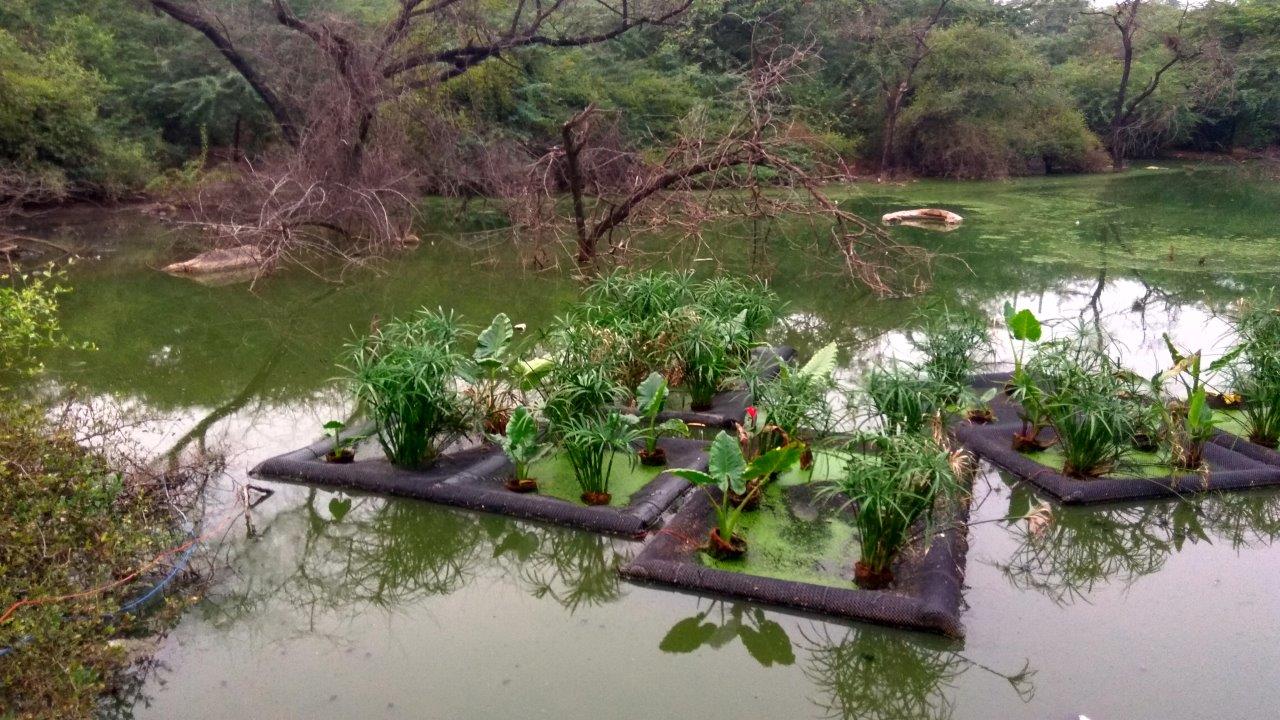
By creating floating treatment wetlands out of small, human-engineered rafts of vegetation, researchers and entrepreneurs hope to biomimic the naturally purifying action of wetlands and provide ecological services to small, polluted bodies of water that may be far from a natural marsh.
Tarun Sebastian Nanda, a British Dutch Indian ecological engineer, is trying to do the same through his initiative ‘Adopt an Island’. His floating wetlands are basically different aquatic plants placed on a buoyant mat built from drainage pipes and used soda bottles. When placed in water bodies, these wetlands purify water and sewage by absorbing significant levels of manganese, iron, aluminium and other contaminants through their roots and foliage, promote reduction in algae and improve the overall ecosystem function.
Tarun, who moved to India from England, has been working in the field of environmental engineering for over six years now. He has worked as a consultant on several projects related to floating wetlands as well as constructed wetlands. He is planning to conduct a series of workshops in Delhi, where he will teach more people how to make the water purifying floating wetlands. He hopes that his floating wetlands help urban water bodies across India breathe freely again.
Also Read: This Ecological Miracle in Kolkata Is Also the World’s Largest Organic Sewage Management System!
4. Fly Ash
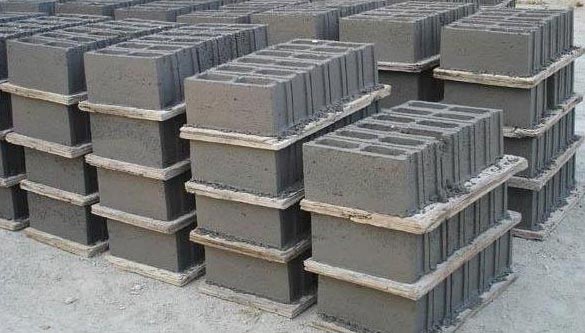
Photo Source
In 2016, students of Bengaluru’s CMR Institute of Technology won a gold medal at the Indian International Innovation Fair for their project on the use of fly ash to treat industrially polluted water or waterbodies like Bellandur lake or Varthur lake. It also offered a solution to another problem plaguing Bengaluru – overflowing plastic garbage.
A byproduct of coal combustion in thermal power plants and cement factories, fly ash can be used to treat Bengaluru’s polluted lakes and can be combined with plastic waste to manufacture flexible composite bricks. The students based their experiment on the ability of fly ash to absorb heavy matter and organic matter present in a solution. When they tested this with a sample of water from Bellandur Lake, they found that foul, brown-black water became clear and did not smell anymore. A simple filtration then separated the fly ash and other pollutants from water.
While it is a promising solution, more research is needed to make it viable on a large scale. However, it is suitable for smaller purposes like treating industrial effluents. The team has already signed an agreement with a textile manufacturer to use this method to treat effluents.
5. Community Lake Festivals
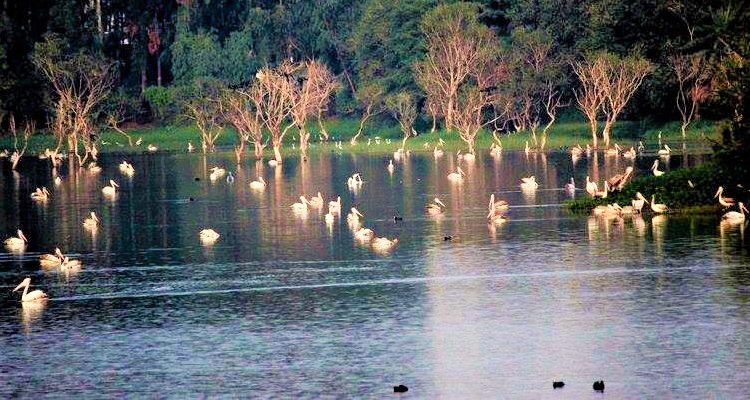
Photo Source
With careful management, lakes can be converted into recreational centres, with boating activities, walkways and benches for visitors. Lakes sustain crucial ecological biodiversity and provide an important recreational space for residents of an increasingly concretised city.
Lakes such as the one in Kaikondrahalli on Sarjapura Road in Bengaluru is a classic examples of how citizens’ participation can work wonders. By 2009, the Kaikondrahalli lake was home to as much sewage as water and had been reduced to an eyesore. That’s when residents of the neighbourhood decided to get together, work with BBMP and revive the lake.
The lake was dredged, encroachments were removed, sewage water was diverted away from the lake, plantation drives were organized and walkways were built to bring communities together and ensure that citizens were directly involved with the efforts to help keep the lake alive. After 16 months of hard work, the group finally began seeing signs of revival in the water body.
When corporate and community funding for the monthly maintenance of the lake began drying up, the residents organised a 42-km full marathon to raise funds for the upkeep of the lake. The campaign went so viral that the team managed to rake up nearly Rs 3.3 lakh to keep the lake maintenance work going for at least a few more months. Now, after rejuvenation and continuous upkeep, Kaikondrahalli Lake and its surroundings, which is close to Bellandur, has turned into a hotspot for photography, bird watching and nature walks.
You May Like: How Three Startups Are Using Innovative Methods to Clean and Restore River Ganga
Like this story? Have something to share? Email: contact@thebetterindia.
NEW! Log into www.gettbi.com to get positive news on Whatsapp.
This story made me
-
97
-
121
-
89
-
167
Tell Us More
We bring stories straight from the heart of India, to inspire millions and create a wave of impact. Our positive movement is growing bigger everyday, and we would love for you to join it.
Please contribute whatever you can, every little penny helps our team in bringing you more stories that support dreams and spread hope.






